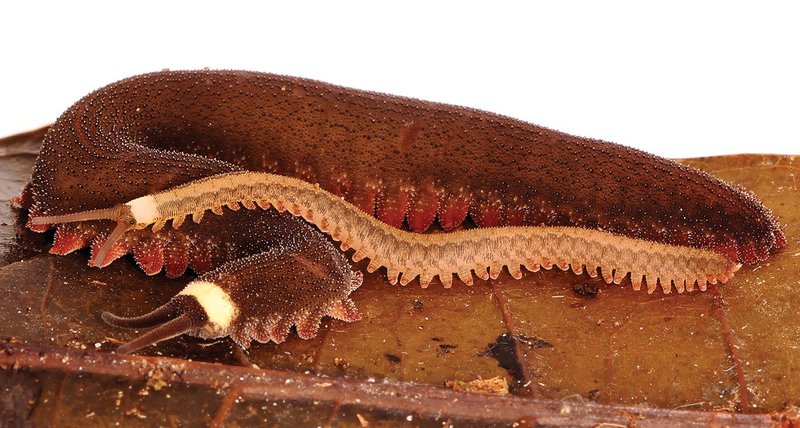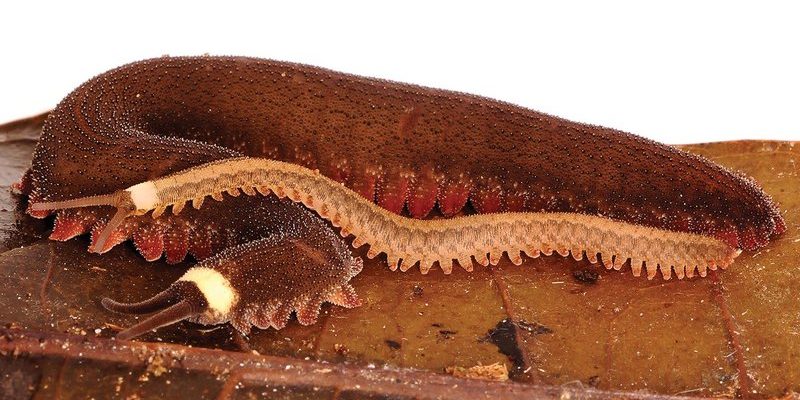
Imagine genetics like a recipe for a cake. Just as the ingredients and cooking time affect the final flavor and texture, the combination of genes in velvet worms determines their color. But it’s not just about the basic colors; there’s a whole spectrum of color morphs influenced by their genetic makeup. Understanding this fascinating aspect of velvet worms can reveal much about their adaptation and evolution. So grab your favorite beverage, and let’s dive into the world of velvet worm genetics!
What Are Velvet Worms?
Velvet worms, scientifically known as *Onychophora*, are fascinating creatures that straddle the line between arthropods and annelids. They have a segmented body covered with a soft, velvety cuticle. These little guys are often described as “living fossils” because they’ve been around for about 500 million years—much longer than dinosaurs! They can be found in moist, shady habitats, typically in tropical and subtropical regions.
Here’s the kicker: velvet worms aren’t just interesting because of their ancient lineage. They exhibit unique traits that make them stand out, like their soft bodies and the slime they produce to catch prey. Their vibrant colors, influenced by their genetics, can signal different things, such as their health, maturity, or even their environment. In essence, their color morphs not only add beauty but serve important evolutionary functions.
The Basics of Genetics in Color Morphs
So how does genetics actually work when it comes to these colors? Well, every living creature’s form and appearance are dictated by DNA—like a blueprint. In velvet worms, specific genes control pigmentation, leading to various color morphs. Think of genes as tiny instructions that tell the body how to build itself.
The color we see is mainly due to pigments, which are compounds that absorb and reflect light in certain ways. For example, melanins can give a darker shade, while carotenoids can lead to yellows and reds. When we talk about color morphs in velvet worms, we’re usually referring to variations in these pigments, and how the genes associated with them are expressed.
How Color Morphs are Inherited
Now you might be curious about how these color traits are passed down. This generally happens through a process called inheritance, where offspring receive genes from their parents. In velvet worms, researchers believe that certain genes are dominant or recessive. For example, if a bright blue velvet worm mates with a dull green one, the offspring may inherit a mix of these traits, creating new color morphs.
It’s kind of like blending two different shades of paint. You mix them together to see what you get. The resulting color morphs can be a fascinating blend of the parents’ characteristics. Sometimes, just one small change in the DNA can lead to a whole new color. Isn’t nature just mind-boggling?
The Role of Environment in Color Variation
While genetics sets the stage for color morphs, the environment plays a crucial role too. Factors like humidity, temperature, and habitat can influence how genes are expressed. For instance, velvet worms that live in darker, damp environments may develop darker colors to help them blend in with their surroundings. This helps them avoid predators—talk about natural selection in action!
Imagine having a wardrobe that changes color to match your environment—pretty neat, right? This adaptability not only enhances their survival but also showcases the beauty of evolutionary mechanisms. So, while genetic inheritance lays down the groundwork, the environment often fine-tunes the final colors we see.
Unique Color Morph Examples
Let’s take a closer look at some specific velvet worm color morphs. Different species can showcase a variety of amazing colors:
- Green Velvet Worms: These are often found in mossy habitats and provide excellent camouflage.
- Blue Velvet Worms: Bright and eye-catching, they are usually more active and can be a bit more visible to predators.
- Red Velvet Worms: These stunning creatures often thrive in leaf litter, where their color helps attract mates.
Each of these morphs not only adds beauty to the landscape but also carries its own set of adaptations unique to its environment. So, next time you see a velvet worm, remember that its color isn’t just for show—it’s a telltale sign of its genetics and adaptability.
Recent Research and Discoveries
As scientists study velvet worm color morphs, they continue to uncover incredible insights. Recent research has focused on the specific genes involved in pigmentation. By isolating these genes, researchers can understand how certain color traits are expressed. This can help illuminate broader questions about evolution and adaptation in other species too.
One fascinating area of study is how color variation might indicate a worm’s health or fitness level. Some studies suggest that brighter colors could signal a healthier individual, making them more appealing for mating. This connection between color and health is just one part of the intricate puzzle of nature’s design.
Understanding the genetics behind velvet worm color morphs is like opening a window into a vibrant world. It’s amazing to see how genes, environment, and evolution work together to create such stunning diversity. The next time you stumble across a velvety little creature, you’ll hopefully have a newfound appreciation for the genetic wonders that contribute to its color.
In a world where every creature plays a role in the ecosystem, velvet worms remind us of the beauty of individuality—each one a little masterpiece shaped by nature’s hand. Whether you’re an avid researcher or just a curious observer, understanding these fascinating creatures brings us one step closer to grasping the complexities of life on Earth.

